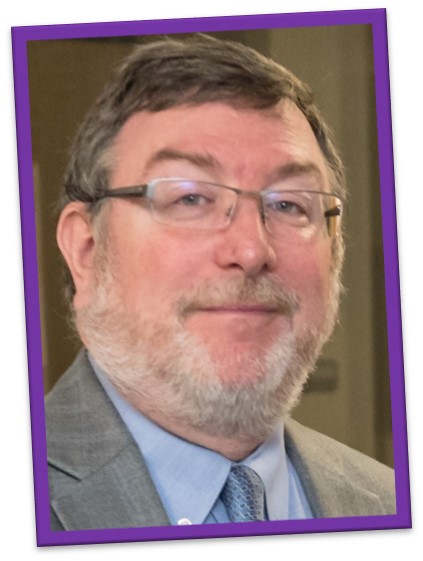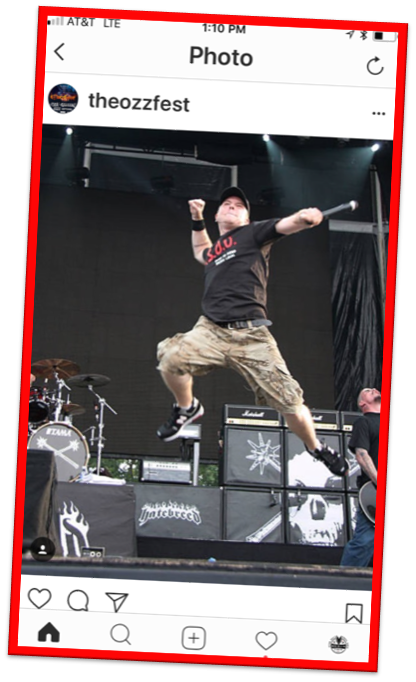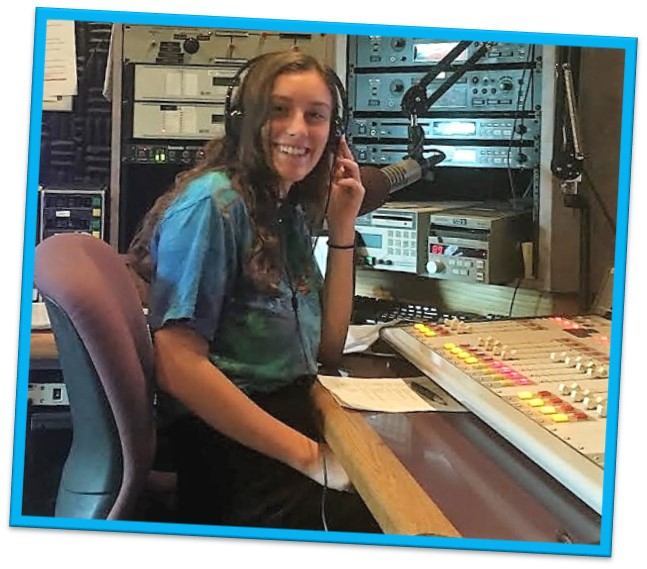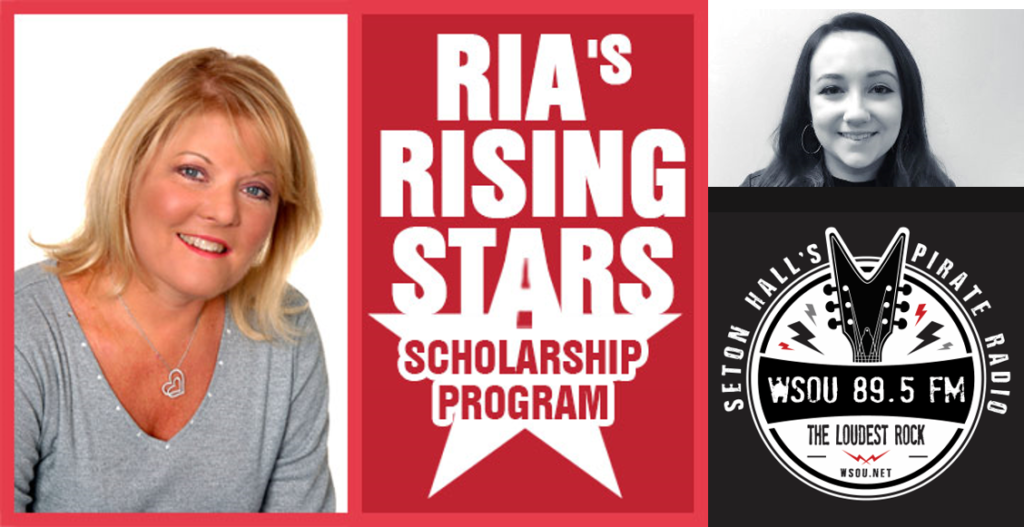
Pirates and swag go back a long way, as the legend goes. But at Seton Hall University – WSOU/Pirate Radio – has made a commitment to swag that would make Captain Jack Sparrow proud.
I learned this first-hand last week when a huge package of swag, freebies, and merch showed up in my office, courtesy of a student radio station and its heads-up general manager, Mark Maben. He was responding to our blog post, “Is Radio Missing The Tchotchke Boat?” from a couple weeks back.
And as you can see by the photos that headline this post, WSOU is doing tchotchkes to the third power. I’m sure many of you who work for commercial stations will feel a pang or two of jealousy over this college radio station’s swag assault.
WSOU has a proud 70 year history, and a key to its success has been a long-running commitment to marketing its logo.
I had the chance to speak with Mark about the station’s philosophy, and its commitment to exposing its brand in the most creative ways possible.
Jacobs Media: Tell me the history of WSOU and swag?
Mark Maben: I wish I could definitely say when WSOU first starting giving out swag. College students don’t always think to preserve station history or “firsts.” So we don’t really know when the first station T-shirt or bumper sticker was made, but we do have evidence of both from the 1970s.
 Swag became a WSOU staple shortly after the station flipped to its current Active Rock format in 1986. Since the station first went on the air on April 14, 1948, WSOU’s mission has been pre-professional development and experiential learning for students at Seton Hall University. To be a “real radio station” in the 1980s meant having swag to give out to listeners and so that’s what the students did. There was a drop off in swag around 2000 and the station mostly only had bumper stickers and one or two shirt designs.
Swag became a WSOU staple shortly after the station flipped to its current Active Rock format in 1986. Since the station first went on the air on April 14, 1948, WSOU’s mission has been pre-professional development and experiential learning for students at Seton Hall University. To be a “real radio station” in the 1980s meant having swag to give out to listeners and so that’s what the students did. There was a drop off in swag around 2000 and the station mostly only had bumper stickers and one or two shirt designs.
I am old school, I believe radio runs, in part, on swag. It’s one of the ways radio builds a connection with its listeners. So when I arrived at WSOU in 2004, one of the first things I did was work with the students to bring back station swag – keychains, pens, stickers, shirts, hats, water bottles, koozies, window clings, etc.
Today, swag is an essential part of who we are. In fact, other parts of the Seton Hall University community contact me regularly requesting station swag to give out to visitors, workshop attendees, and potential students. Equally important, when we are out at concerts or remotes, we have listeners who come up to us to see what new swag we might have. That’s a sign we’ve built a real connection with our fans.
JM: What’s the marketing philosophy/rationale behind this?

MM: As a student-run college station in the New York market, we are never going to have resources to buy billboards. There will never be the funds for a WSOU ad on TV or cable. There is no $1,000 daily giveaway to attract listeners. For us, swag is a cost-effective way to market WSOU and get the word out. When someone rocks a WSOU T-shirt and someone else asks “what’s WSOU?” they are going to respond with “It’s this great radio station, you’ve got to check it out, dude.” That’s marketing gold for us.
JM: What would you say to stations that tell you there’s nothing budgeted for logo merch?
MM: That they need to rethink their budgets. It’s simply crazy not to have branded merch, especially in 2018. It is a modest investment that yields great returns. Within the last two years I’ve witnessed firsthand in Manhattan, New Jersey, and at a county fair in a small market in Wisconsin the disappointment listeners feel when they encounter a station they love at a remote and the station staff has no tchotchkes to give away.
It’s almost criminal the way commercial stations have decimated their budgets for logo merch. Our P1s are essentially members of the family and we want to treat them right. It may sound corny, but you can actually make a listener’s day with something as simple as a pen, keychain, magnet or bumper sticker. You want your jocks, street team, and everyone else on staff armed with swag not only for remotes, but for chance encounters with your listeners.
JM: What kind of reaction do you get from students and listeners?
MM: The reaction from listeners has been great. Our signal reaches all five boroughs of New York and a big chunk of northern New Jersey, so most of our listeners aren’t Seton Hall students. When we are at a “WSOU Presents” concert, everyone wants the chance to spin our prize wheel and because we invest in swag, everyone gets something. We see so many happy and excited faces. It gets them talking with our staff, too, which nets us feedback, the opportunity to remind listeners to be following us on our socials, and just have a deeper connection with our audience.
 What’s been amazing though is the attachment some people build with our swag. We have three different models of branded pens. One in particular has become a favorite with listeners, area businesses, and station underwriters because it writes really well (even though it’s inexpensive). It’s a pen we’ve been purchasing for about 10 years. We actually have people call us up and ask for a new pen when their old one runs out of ink! The simple gesture of sending a listener or a business a new pen creates a ton of goodwill. But you can’t create that goodwill if you don’t have the swag.
What’s been amazing though is the attachment some people build with our swag. We have three different models of branded pens. One in particular has become a favorite with listeners, area businesses, and station underwriters because it writes really well (even though it’s inexpensive). It’s a pen we’ve been purchasing for about 10 years. We actually have people call us up and ask for a new pen when their old one runs out of ink! The simple gesture of sending a listener or a business a new pen creates a ton of goodwill. But you can’t create that goodwill if you don’t have the swag.
Another great thing is the reaction our students get when they are wearing station shirts or hoodies. This happened just the other day when three of my students were coming back from an event. They were in matching station T-shirts and stopped to eat at a locally-owned burger place called Stony’s. A longtime listener happened to be eating there with his daughter and they both got so excited to meet people from WSOU. The listener actually took the time to email me a note of thanks and send one of his photos from the encounter (picture above).
I’ve had similar encounters when I am out running weekend errands in station swag and meet a listener by chance. That’s why I keep some swag in my car so I always have something to give out as a thank you for listening.
JM: Tell me about the monetization piece. And what are the profits used for?
MM: While we have inexpensive items we give out for free, as a noncommercial student station we can’t afford to giveaway too many T-shirts, hoodies, and other more costly swag. For years we sold those at events, concerts, and remotes.

About six years ago, a student suggested we create an online merch store and it’s done really well for us. We move a lot of shirts and hoodies around the December holidays and then again when the summer hits. Creating limited edition designs also helps drive sales. Many of our T-shirts have been designed by students, which is neat for our listeners and cool for the students who create the designs.
The money we make is put right back into the station in two ways. The revenue is used to buy more swag to keep the circle going. More importantly, the funds from the sale of our merch are used to send students to professional development opportunities like The Conclave, CBI’s National Student Electronic Media Convention, and the NAB Radio Show. WSOU’s online store has been a game changer in that regard. More students get to attend conferences and conventions thanks to a simple online swag shop.
JM: How do you decide which items to create?
MM: Most of the swag ideas come from the student managers and assistant managers, but any staff member can suggest an item to create. Our Underwriting Sales and Marketing manager, Jen Kajzer, is great at suggesting items too.
 One of the wonderful things about students is they often know what is trending before older folks like me do. For example, just before fidget spinners were a craze (pictured at right), our music director recommended we get some for the station. We did and we had them on hand to give out right as fidget spinners were becoming big. Same was true when cellphone wallets first came along. When we have swag that’s just a bit ahead of the curve, it helps give radio that cool factor again.
One of the wonderful things about students is they often know what is trending before older folks like me do. For example, just before fidget spinners were a craze (pictured at right), our music director recommended we get some for the station. We did and we had them on hand to give out right as fidget spinners were becoming big. Same was true when cellphone wallets first came along. When we have swag that’s just a bit ahead of the curve, it helps give radio that cool factor again.
JM: What’s the oddest thing WSOU ever created?
MM: WSOU Temporary Tattoos. Permanent or temporary, I don’t ink myself, but these tats were so popular we had to reorder them twice. It’s awesome to be giving away swag at a place like the PNC Bank Arts Center and then later walk around the show and see all these people who’ve put a WSOU Tattoo on themselves.
JM: What was the most successful?
MM: Probably our “DARE” T-shirt. A student designed it a decade ago and it is still one of our best sellers all these years later.
Mark also wanted me to remind JacoBLOG readers that college radio is alive and well in 2018. Here’s his “take” on the student mindset when it comes to broadcast radio:
“At WSOU, we’ve been enjoying a renaissance of student interest and participation. Today, more than 125 students are on the staff of WSOU. When I first came to Seton Hall, we normally had 60 to 70 students on staff each year. Thanks to podcasts, streaming audio, and more, students are coming to campus with a renewed interest in audio. Colleagues at other schools report similar trends.
“I don’t worry about the future of radio due to a lack of interest on the part of young people, because more and more are flocking to audio. But I do worry about whether our industry will capitalize on this interest to create the kind of programming innovation and audience engagement we need for radio to thrive throughout the 21st century.
 “Finally, given the topic I think it is worth noting that the most popular session every year at CBI’s National Student Electronic Media Convention is the ‘Swag Swap.’ It’s where college radio and TV stations gather to trade and admire each other’s swag. It shows that Millennials and Gen-Z get it when it comes to the importance of logo merch for your media outlet.”
“Finally, given the topic I think it is worth noting that the most popular session every year at CBI’s National Student Electronic Media Convention is the ‘Swag Swap.’ It’s where college radio and TV stations gather to trade and admire each other’s swag. It shows that Millennials and Gen-Z get it when it comes to the importance of logo merch for your media outlet.”
One final note: One of Mark’s WSOU students, Alicia Campos (pictured above), will be honored this week at the Worldwide Radio Summit as one of “Ria’s Rising Stars” scholars, the fund started by Joel Denver in memory of his wife, Ria. It’s fitting there’s a connection here between Seton Hall and Hollywood this week.
- What To Do If Your Radio Station Goes Through A Midlife Crisis - April 25, 2025
- A 2020 Lesson?It Could All Be Gone In A Flash - April 24, 2025
- How AI Can Give Radio Personalities More…PERSONALITY - April 23, 2025




Wish we had the budget for that cool stuff at WWUH
Strange, right? College and non-profits outshining commercial stations. I’m sure there is a myriad of opinions as to why this is happening, but it shows what you can do when you’re committed to a merch program. Thanks, Brian.
Yes, “.. a myriad of opinions as to why… ”
The simple answer, of course (and its no mystery), is that commercial stations, whose owners paid WAY too much for their properties, cut the promo budget. Sorry kids, no stickers, no t-shirts, no______.
Instead, you guys need to figure out how to jam more spots into the hour. Now go away.
(Sigh!) I’m starting to hate reading about shit like this. Its making me sad that good ideas like this are being ignored by most of the industry.
The baby with the bath water. Look, some of those cuts had some justification, whether we like it or not. But when you cut big marketing (TV, outdoors, etc.) and you also cut swag and street promotion, you’re asking for image and top-of-mind erosion. For some of the truly built-to-last brands, it’s actually taken a long time to see the rust, but it’s inevitable.
There are pockets of stations that are thinking, scheming, and working to improve their positions. I got a tweet from Terrie Carr from WDHA after this new tchotchke blog post came out. They held a marketing meeting to discuss next steps for their brand. None of us is going to change the world, but if we can elevate radio – even one station at a time -it’s worth the effort.
Thanks, Max, for still giving a shit.